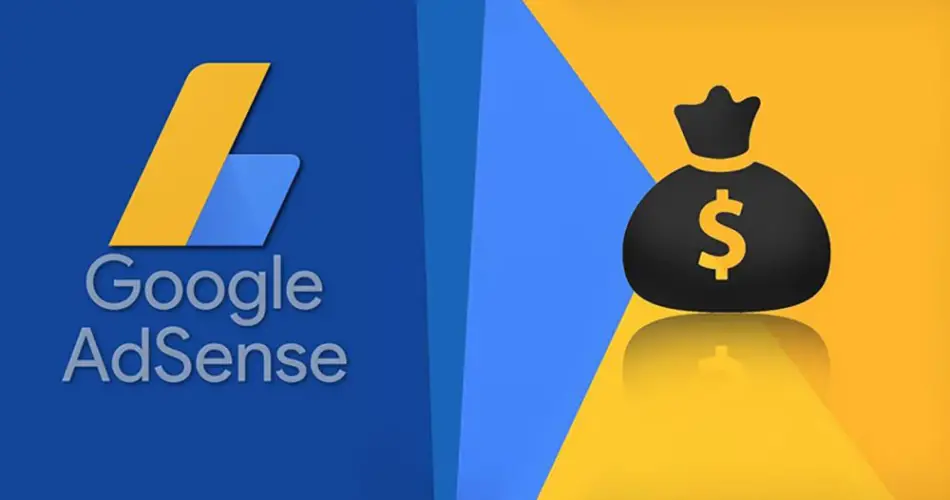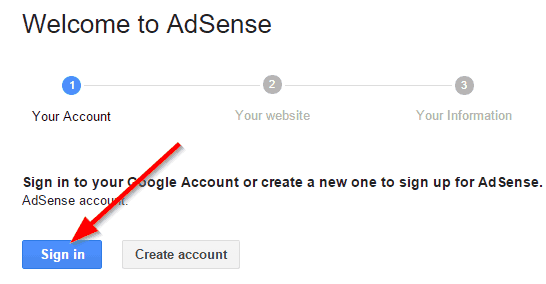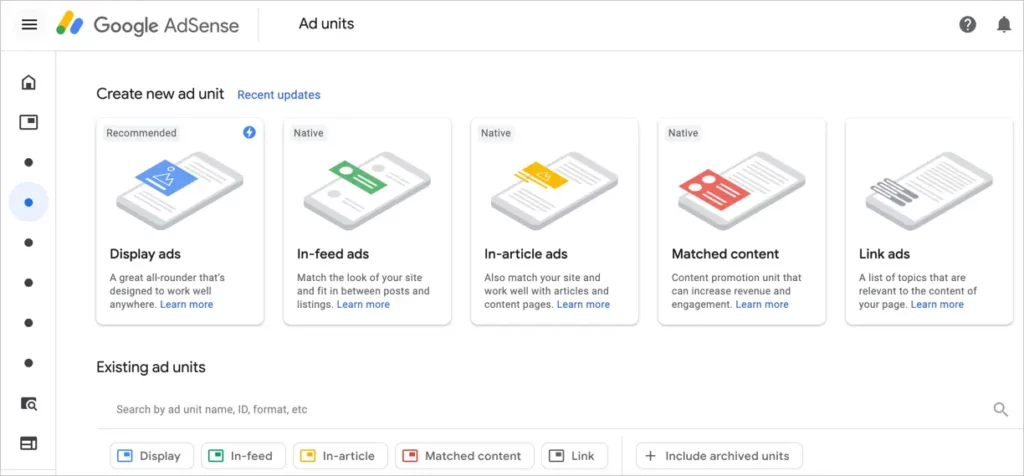If you have a website or blog and are looking for ways to monetize it, Google Adsense is a great option to consider. As one of the largest and most popular advertising networks, Adsense allows publishers to earn money by displaying ads on their websites.
With over 2 million active users worldwide, Adsense has become the go-to platform for website owners who want to generate passive income. It offers a range of ad formats, from display ads to search ads, which can be customized to fit the look and feel of your website. Plus, Adsense provides access to the world’s largest pool of advertisers, ensuring that your website gets high-quality ads and maximum revenue potential.
However, getting started with Adsense can be difficult, especially if you’re pretty new to the world of online advertising. There are numerous guidelines and policies to follow, and optimizing your ad revenue requires a lot of trial and error. That’s why we’ve put together this ultimate guide and review of Google Adsense, which covers everything you need to know to successfully monetize your website with Adsense.
This ultimate guide of Google Adsense is designed to be a comprehensive resource for both beginners and experienced Adsense users. We’ll walk you through the sign-up process, show you how to create and customize ad units and provide tips on how to optimize your ad revenue. We’ll also explain Adsense policies and guidelines, so you can avoid any pitfalls that could result in your account being suspended or terminated. This whole Google Adsense Review include my 5 years of experience with more than 5000 website approval in the AdSense Ecosystem.
Whether you’re a blogger, content creator, or online business owner, this guide will provide you with the knowledge and tools you need to maximize your ad revenue with Google Adsense. So, let’s dive in and discover how you can turn your website into a money-making machine with Adsense! Let’s start the detailed Review of Adsense:
What is Google Adsense?

Google Adsense is an advertising platform that enables website owners and publishers to earn revenue by displaying ads on their sites. Adsense provides a way for advertisers to reach their target audience by matching relevant ads to the content of the website. The ads are displayed in various formats, including text, display, and video ads, and the website owner earns money when visitors engage with ads.
To get started with Adsense, website owners need to sign up for an account and submit their website for review. Once approved, they can create ad units and customize them to match the look and feel of their website. Adsense offers a range of targeting options, such as contextual targeting, which matches ads to the content of the website, and personalized targeting, which uses data from Google to show relevant ads to visitors based on their interests.
Adsense also provides a range of performance reports and analytics to help website owners optimize their ad revenue. These reports show metrics such as ad impressions, clicks, click-through rate, and revenue earned. Website owners can use this information to adjust their ad placement, ad format, and targeting options to improve their revenue.
Things Required before signup to Adsense
This is most crucial thing come before you as a webmaster before signing up to the Google Adsense. These prequisets even led me to disapproval while qalifing these requirements, I get approved within 24 Hour Time Frame. Some of these are illustrated below in a detailed manner:
- Website content: Adsense requires that your website has high-quality, original content that provides value to your visitors. Make sure your website has enough content before applying for Adsense. A good rule of thumb is to have at least 10-15 post of high-quality content.
- Website design: Your website should have a clean and professional design that is easy to navigate. Make sure your website is user-friendly and has a clear structure that makes it easy for visitors to find what they’re looking for.
- Traffic: While Adsense doesn’t have a minimum traffic requirement, having a steady flow of visitors to your website can increase your chances of getting approved. Make sure your website is generating some traffic before applying for Adsense.
- Age of website: Adsense requires that your website is at least 6 months old before you can apply if you’re located in certain countries such as India, China, and Pakistan. However, this is not a hard and fast rule, and you can still apply if you have high-quality content and traffic.
- Domain name: You’ll need to have a domain name for your website before you can apply for Adsense. Make sure your domain name is relevant to your website’s niche and is easy to remember.
If you have qualified for all of these basic requirements, then move ahead:
video: Adsense Review
Getting Started with Google Adsense
In this section of Google Adsense Review, we are going to learn about “Getting Started with Google Adsense”. These things contains my experience of past 4 years in the industry with adsense approvals.
Evaluate your website content and design
Before you apply for Adsense, it’s important to evaluate your website’s content and design to ensure it meets the platform’s policies and guidelines. Adsense requires that your website has high-quality, original content that provides value to your visitors. You should also ensure that your website has a clean and professional design that is easy to navigate.
Sign up for an Adsense account

Once you’ve evaluated your website and determined that it meets Adsense’s policies, you can sign up for an account. You can do this by visiting the Adsense website and filling out the registration form. During the sign-up process(Refer to Above Image), you’ll need to provide some basic information about yourself and your website, such as your name, website URL, and preferred language. Once you’ve submitted your application, Adsense will review your website to ensure it meets their policies and guidelines.
Create and customize ad units
After your account is approved, you can start creating ad units for your website. Ad units are the different types of ads that you can display on your site, such as display ads, text ads, and link units. Adsense offers a range of customization options to help you create ad units that match the look and feel of your website. You can customize the ad size, color, and placement to ensure they blend seamlessly with your website’s design.
One important thing to consider, In India Sub continent and USA 300*250 Sized Ad Banner has highest amount of advertiser while in Europe 300*200 has highest number of advertisers for desktop audience while 100*80 and 120*80 has highest number of advertisers which mean these ad size has highest ad rates.
By following these steps, you can get started with Google Adsense and begin monetizing your blog with High CPC adsense ads that are relevant to your content and audience. Remember to keep evaluating your website’s content and design to ensure it meets Adsense’s policies and to optimize your ad revenue.
Ad Formats and Ad Placement

While Consideing ad format or placements of Google Adsense in your blog or website. You need to to Consider following:
Understanding Ad Formats:
- Different Types of Ad Formats:
- Display ads: These are visual ads that appear in different sizes and formats, including banners, squares, and rectangles.
- Text ads: These are ads that consist of text only and appear in a variety of sizes and colors.
- Link units: These are ad units that display a list of related topics or keywords that, when clicked, take the user to a page of related ads.
- Responsive ads: These are ads that adjust their size and format to fit the screen size and orientation of the user’s device.
- Choosing the Right Ad Format:
- Consider the type of content on your website and how it could complement different ad formats.
- Think about your website’s layout and how different ad formats would fit into it.
- Analyze your website’s traffic and user behavior to determine which ad format could provide the best user experience and generate the most revenue.
Customizing Ad Formats:
- Ad Format Customization Options:
- Color and font customization: You can customize the color and font of your ad text to match your website’s design.
- Ad size customization: You can select from a range of ad sizes or create custom sizes to fit your website’s layout.
- Ad style customization: You can choose from a variety of ad styles, such as rounded corners or drop shadows, to match your website’s design.
- Tips for Optimizing Ad Format Settings:
- Experiment with different ad formats and placements to see what works best for your website.
- Test different color combinations and ad styles to see what generates the most clicks and revenue.
- Monitor your ad performance regularly and adjust your ad format settings accordingly.
- Ad Format Optimization Tools:
- Adsense offers a range of optimization tools to help you maximize your ad revenue. These tools include Ad Balance, which lets you control the number of ads that appear on your site, and Page-level ads, which display ads at strategic points in the user’s browsing experience.
- Adsense also provides analytics tools to help you track your ad performance and make data-driven decisions about your ad format settings.
Placing Ads on Your Website:
Placing ads on your website is a critical part of generating revenue through Google Adsense. When done correctly, it can enhance the user experience on your website while generating revenue from ad clicks. However, improper ad placement can lead to a poor user experience, low click-through rates, and even lower revenue.
One of the best practices for ad placement is to strategically place ads in areas of high user engagement. For example, ads placed above the fold, or the portion of the page that is visible without scrolling, typically receive higher engagement than ads placed below the fold. Additionally, ads placed near the content that users are most interested in can generate higher click-through rates.
Another key factor in ad placement is the number of ads displayed on a page. Overcrowding your website with too many ads can negatively impact the user experience, leading to a high bounce rate and lower revenue. Adsense’s Ad Balance feature can help you find the right balance of ads to display on your website.
It’s also important to ensure that your ad placements comply with Adsense policies. For example, ads should not be placed in a way that misleads users or encourages accidental clicks. Ads should be clearly labeled as ads and should not be placed near interactive elements that could be mistaken for ads.
In 2022-23, almost half of our adsense revenue was generated with the help of above the fold ads with only of the total impressions.
Policy You Must Adhre to Getting approved in Adsense:
In my 4 year of experience, Google Adsense only needs high quality and engaging main stream content to getting approved after approval you need to stay away from self clicking like practice and many more.
Payment: google Adsense
Google Adsense usually pays you when you crossed the payment threshold of 100$ or equivalent in your respective currency. They also have a NET-30 payment terms.
Pros and Cons:
Pros:
- Easy to use: Google Adsense is easy to set up and use, even for beginners.
- High earning potential: Adsense has a high earning potential, with the ability to generate revenue from ad clicks and impressions.
- Wide range of ad formats: Adsense offers a variety of ad formats to choose from, including display ads, text ads, and link units.
- Ad targeting options: Adsense allows publishers to target specific audiences based on location, language, and other factors, which can increase ad relevance and click-through rates.
- Reliable payments: Google Adsense provides reliable and timely payments to publishers, typically once per month.
Cons:
- Strict policies: Adsense has strict policies that must be followed to avoid account suspension or termination.
- Low click-through rates: Ad click-through rates can be low, particularly if ads are not placed in strategic locations on the website or if the ads are not relevant to the content.
- Revenue sharing: Google takes a portion of the revenue generated by ads displayed on publisher websites, typically around 32%.
- Lack of control: Publishers have limited control over the ads that are displayed on their website, which could result in ads that are not relevant or appropriate for their audience.
- Ad blindness: Some users may develop “ad blindness,” where they ignore or tune out ads altogether, which can decrease click-through rates and revenue.
